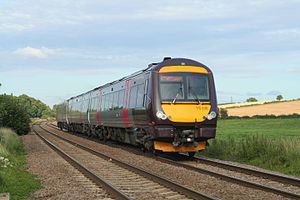
The British Rail Class 357Electrostar are alternating current (AC) electric multiple unit passenger trains (EMUs) built by Adtranz at its Derby Litchurch Lane Works, England, in two batches from 1999 to 2002 at a cost of approximately £292 million.

The British Rail Class 170 Turbostar is a British diesel multiple unit (DMU) passenger train designed and built by Adtranz, and later by Bombardier Transportation, at Derby Litchurch Lane Works.
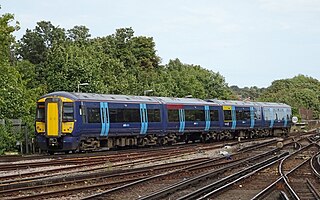
The British Rail Class 375 Electrostar is an electric multiple unit train that was built by Bombardier Transportation at Derby Litchurch Lane Works, from 1999 to 2005. The class form part of the Electrostar family of units, which also includes classes 357, 376, 377, 378, 379 and 387, the most numerous type of EMU introduced since the privatisation of British Rail.

The British Rail Class 424 "Networker Classic" was a prototype electric multiple unit (EMU) built in 1997 by Adtranz at Derby Litchurch Lane Works from a Class 421 driving trailer vehicle.
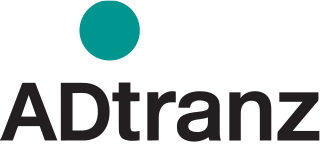
Adtranz was a multi-national rail transportation equipment manufacturer with facilities concentrated in Europe and the US. The company, legally known as ABB Daimler-Benz Transportation was created in 1996 as a joint venture between ABB and Daimler-Benz to combine their rail equipment manufacturing operations. In 1999, DaimlerChrysler bought ABB's shares and changed the company's official name to DaimlerChrysler Rail Systems. The company was acquired by Bombardier Inc. in 2001, which merged it into its Bombardier Transportation division, which became the largest rail equipment manufacturer in the world at the time, and was ultimately acquired by Alstom in 2021.

The British Rail Class 222 Meridian is a diesel-electric multiple-unit high-speed passenger train capable of 125 mph (200 km/h). Twenty-seven sets were built by Bombardier Transportation in Bruges, Belgium.
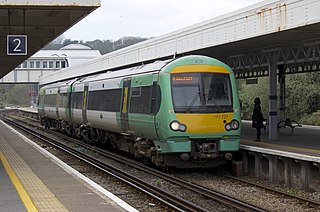
The British Rail Class 171 Turbostar is a type of diesel multiple unit (DMU) passenger train built by Bombardier Transportation at Derby Litchurch Lane Works in England. It is identical to the Class 170, except for the replacement of the BSI coupler with a Dellner coupler. This provision was made to allow emergency joining with Class 377 DC third-rail electric units, which Southern runs extensively on most lines. The units work on the southern regions of the British railway system, operating services from London Bridge to Uckfield and from Eastbourne to Ashford International, these routes being unelectrified between Hurst Green Junction and Uckfield and between Ore and Ashford International, respectively.
Bombardier Transportation was a Canadian-German rolling stock and rail transport manufacturer, with headquarters in Berlin, Germany. It was one of the world's largest companies in the rail vehicle and equipment manufacturing and servicing industry. Bombardier Transportation had many regional offices, production and development facilities worldwide. It produced a wide range of products including passenger rail vehicles, locomotives, bogies, propulsion and controls. In February 2020, the company had 36,000 employees, and 63 manufacturing and engineering locations around the world. Formerly a division of Bombardier Inc., the company was acquired by French manufacturer Alstom on 29 January 2021.
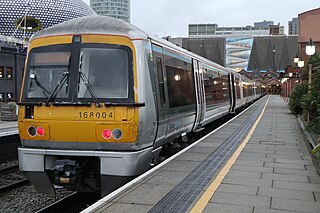
The Class 168Clubman is a British diesel multiple unit (DMU) passenger train used on Chiltern Line services between London Marylebone and the West Midlands. The trains were built by Adtranz at the Derby Litchurch Lane Works in several batches from 1998.

The Bombardier Electrostar is a family of electric multiple-unit (EMU) passenger trains manufactured by Bombardier Transportation at their Derby Litchurch Lane Works in England between 1999 and 2017. It has become the most common new EMU type in the United Kingdom since the privatisation of British Rail with a number of variants. Electrostar trains are most common on high-volume suburban commuter routes around London; and on mainline services from London south to Surrey and the south coast, east to Essex, and north to Cambridge and Stansted Airport.

Jacobs bogies are a type of rail vehicle bogie commonly found on articulated railcars and tramway vehicles.
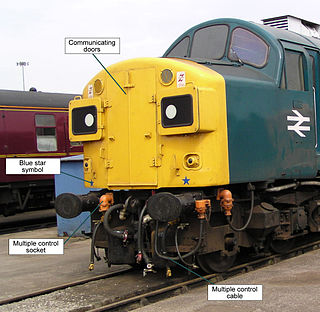
On the UK rail network, multiple working is where two or more traction units are coupled together in such a way that they are all under the control of one driver.
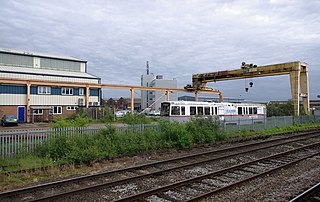
Derby Litchurch Lane Works, formerly Derby Carriage and Wagon Works, is a railway rolling stock factory in Derby, England. It was opened in the 19th century by the Midland Railway. The plant has produced rolling stock under the ownership of the Midland Railway. It is now owned by Alstom.

Iore, often stylized IORE, is a class of 34 electric locomotives built by Adtranz and its successor Bombardier Transportation for the Swedish mining company LKAB's railway division Malmtrafik. The class is a variation of Adtranz's Octeon modular product platform, thus related to Bombardier's later TRAXX platform. The locomotives are considered to be one of the most powerful locomotives and haul iron ore freight trains on the Iron Ore Line and Ofoten Line in Sweden and Norway, respectively. The 8,600-tonne 68-car trains are hauled by two single-ended Co′Co′ locomotives, each with a power output of 5,400 kW (7,200 hp). Each operates with 600 kilonewtons tractive effort and has a maximum speed of 80 km/h (50 mph). Delivery of the first series of 18 locomotives was made from 2000 to 2004, and they replaced some of the aging Dm3 and El 15 units. In 2007, eight more vehicles were ordered, with production to be completed by 2011, by which time, another four double units were ordered. These units were scheduled to be delivered from 2013 to 2014.

The British Rail Class 172 is a British diesel multiple unit (DMU) passenger train from the Turbostar family, built by Bombardier Transportation's Derby Litchurch Lane Works for use on inner-suburban passenger services. The class is currently operated by West Midlands Railway.

The 900/800 class railcars were diesel multiple units built by the New South Wales Government Railways between November 1951 and November 1960.
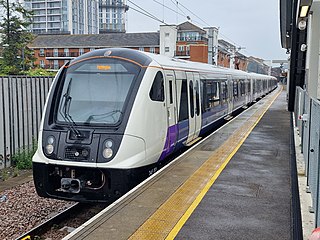
The Alstom Aventra is a family of electric multiple unit (EMU) passenger trains produced in the United Kingdom, originally by Bombardier Transportation and later by Alstom, as a successor to the Bombardier Electrostar. A large proportion of its design is based on the Electrostar, adding new technologies and achieving compliance with more stringent requirements and operator demands.

The LRTA 1100 class is the second-generation class of high-floor light rail vehicles of the Light Rail Transit Authority (LRTA) in Manila, Philippines, which began operation in 1999.
